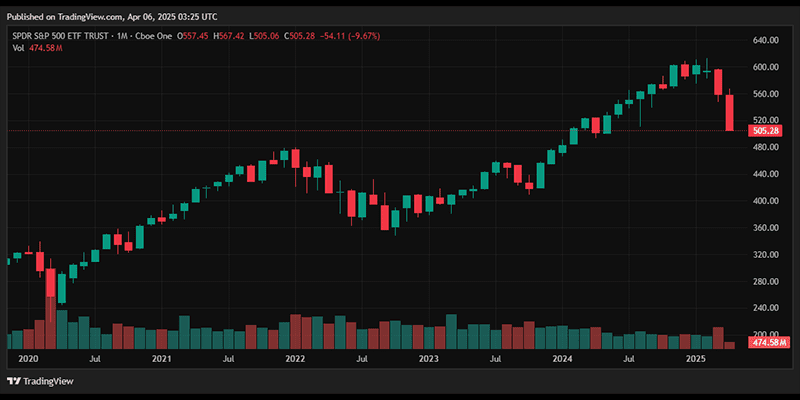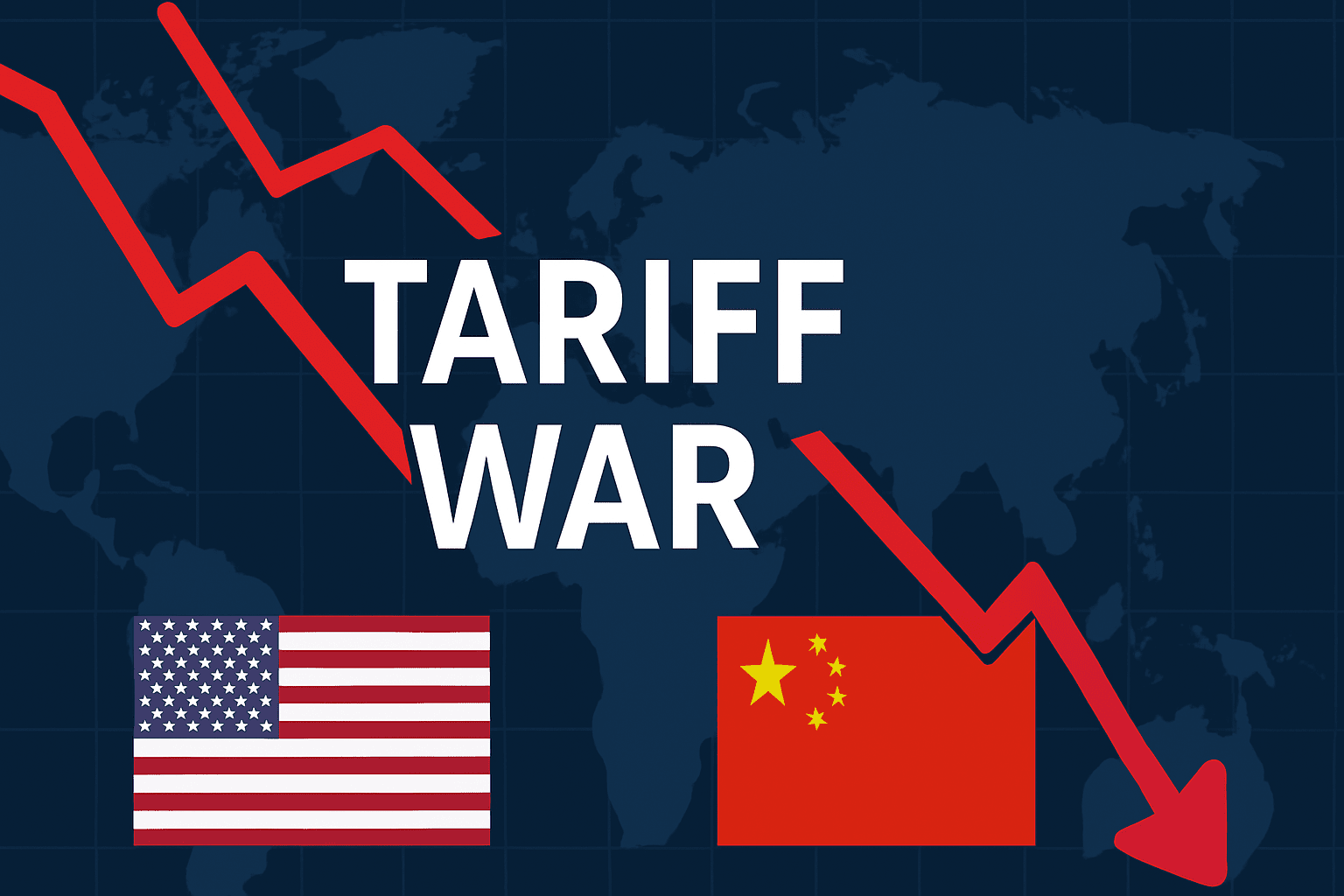Summary
The U.S. economy is going through big changes after new tariffs were announced by President Donald Trump. On April 2, he introduced major taxes on products coming into the U.S. from several countries. He called it a “rebirth” of American industry and dubbed it "Liberation Day".
Market Recap
Market Movers
- 📈 Tariff War Updates : Apr 7, 2025
- 📈 US CPI Inflation Data: Apr 9, 2025
📚 Deep Dive 📚
As of April 6, 2025 , the U.S. economy is going through big changes after new tariffs were announced by President Donald Trump. On April 2, he introduced major taxes on products coming into the U.S. from several countries. He called it a “rebirth” of American industry and dubbed it "Liberation Day".
The tariffs are significant and beat most estimates. Some of the tariffs are as high as 50%. China was hit with a 34% tariff. Experts say this could hurt the U.S. economy. Growth may slow by 2%, more people could lose jobs, and prices could go up.
How does it affect the every day American?
The average American household could end up paying around $3,800 more per year because of higher prices on imported goods. That number assumes consumers don’t cut back on spending—important to note since the U.S. is the world’s biggest consumer market.
If Americans do pull back, it would actually hurt the countries exporting to US, and in theory, Trump’s strategy would be "working."
But that’s not what the market is focused on right now. Wall Street is reacting to the direct hit on companies: Apple AAPL could see a 10% drop in net income, Nike NKE and Tesla TSLA along with many others are also expected to take a financial hit as costs rise.
Investors are hoping Trump’s plan works—or at least that the pressure he is applying on countries leads to a better outcome. Granted, it has only been a few days.
Is this the Art of the Deal in action?
Back to the tariffs themselves—some are as high as 50%. China was hit with a 34% tariff, and after they hit back with their own, the total impact adds up to around 54%. Experts warn this could take a toll on the U.S. economy. It might slow growth by 2%, push up unemployment, and drive prices higher across the board.
These events shook the markets.
April 3, 2025:
SPY fell by -4.8%
QQQ dropped by -6%
IWM declined by -6.6%
April 4, 2025:
SPY fell by -6%
QQQ dropped by -6.2%
IWM declined by -4.5%.
Bloody Friday saw all indexes drop -5 and even -6%.
How did Countries Respond?
China responded quickly. They placed a 34% tax on all U.S. products, stopped buying some American farm goods, and started looking into big U.S. companies doing business in China. This back-and-forth is creating a new trade war, and it could affect the global economy.
Many industries around the world are feeling the pressure. In Bangladesh, clothing factories that sell to the U.S. are in trouble after a sudden 37% tariff. Some customers are now cutting their orders by up to 30%. Car company Jaguar Land Rover has also stopped shipping cars to the U.S. because of the new tariffs. Things happen quickly.
Technical Twist:
SPY is now -17% from its all-time-high. Just 3% shy of reaching a technical Bear Market.
 If SPY reaches Bear Market territory, I will look to DCA my positions for my long term portfolio and swing some calls. I did my first dip buys in March, and look to do another round if we hit Bear Market this week. Lock in our Discord for those moves.
If SPY reaches Bear Market territory, I will look to DCA my positions for my long term portfolio and swing some calls. I did my first dip buys in March, and look to do another round if we hit Bear Market this week. Lock in our Discord for those moves.
VIX reached 45 Friday. Here's every time this happened in the past, and what the S&P 500 did over the next few days. Good positive hit ratio... via subutrade

Market corrections and bear markets are part of the game—we’ve seen plenty at GAR Capital. We have been through 2014, 2018, 2020, and 2022 bear markets and corrections, not to mention the countless pullbacks along the way. These moments test investors and traders, but cool heads always prevail.
If you’re taking heavy losses right now, it’s likely because you’re overexposed. Adjust your risk—position sizing is everything. Use 1-4 risk per trade.
Buy time with options and use smaller risk then usual. Use futures to maximize daily scalping in volatile environments. Futures brings low cost low risk/reward, with just $150 you can trade a $50,000-$150,000 prop acccount. (OPM) Stocks lock into our Investment Club for the scoop. Whatever you trade--we got you covered.
One key principle: Dollar Cost Average your long-term positions TODAY —if you have the means. This is how real wealth is built. You buy when there’s blood in the streets. That’s been my approach for years—every time the market drops 10% or more, I DCA into my favorite names for my long-term portfolio. Crypto I do the same.
I added to a few positions back in March, and if the S&P 500 officially enters bear market territory, I’ll be buying more.
Want to follow along with the next move? Lock in with us on Discord and stay ready!


